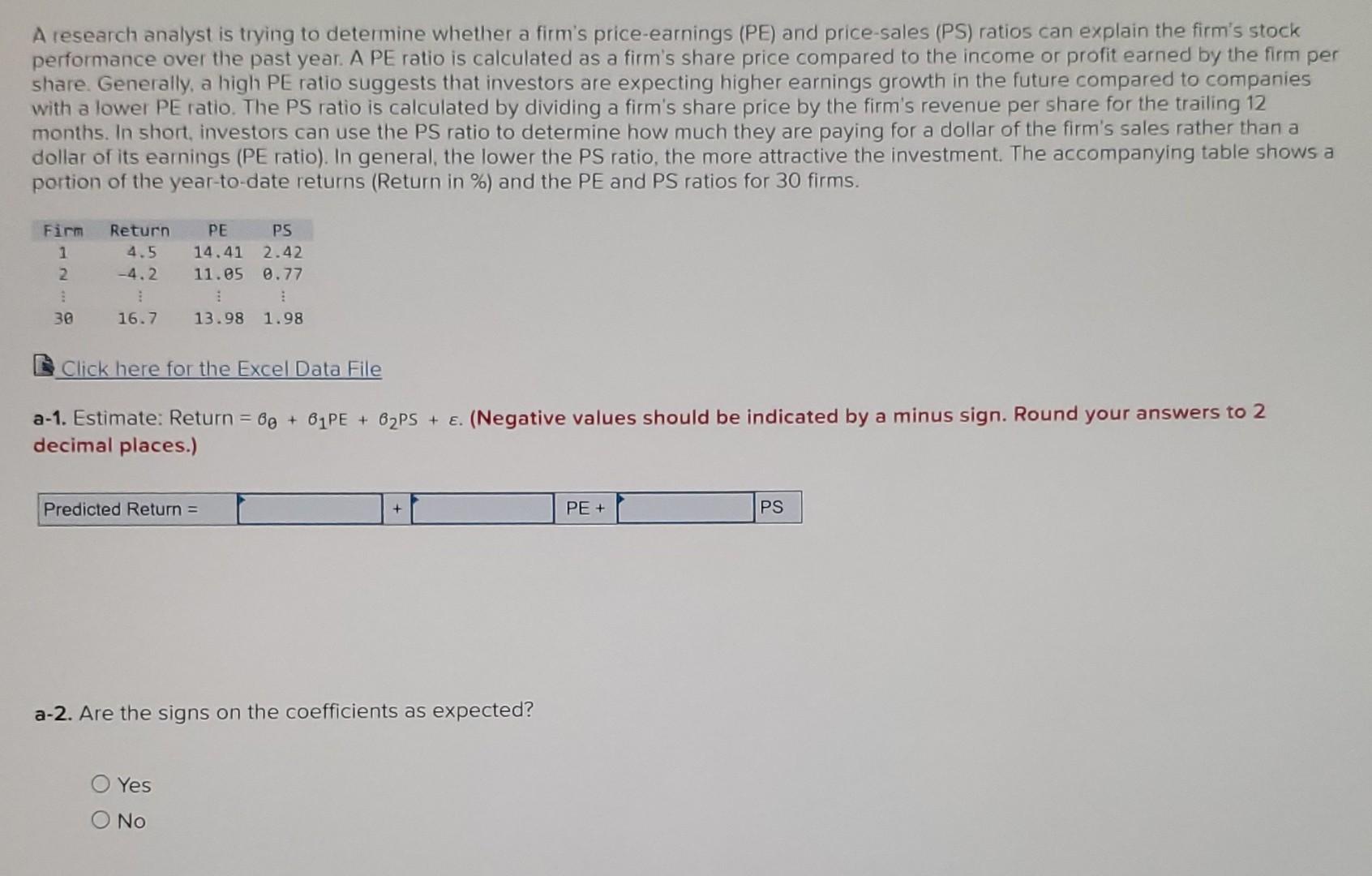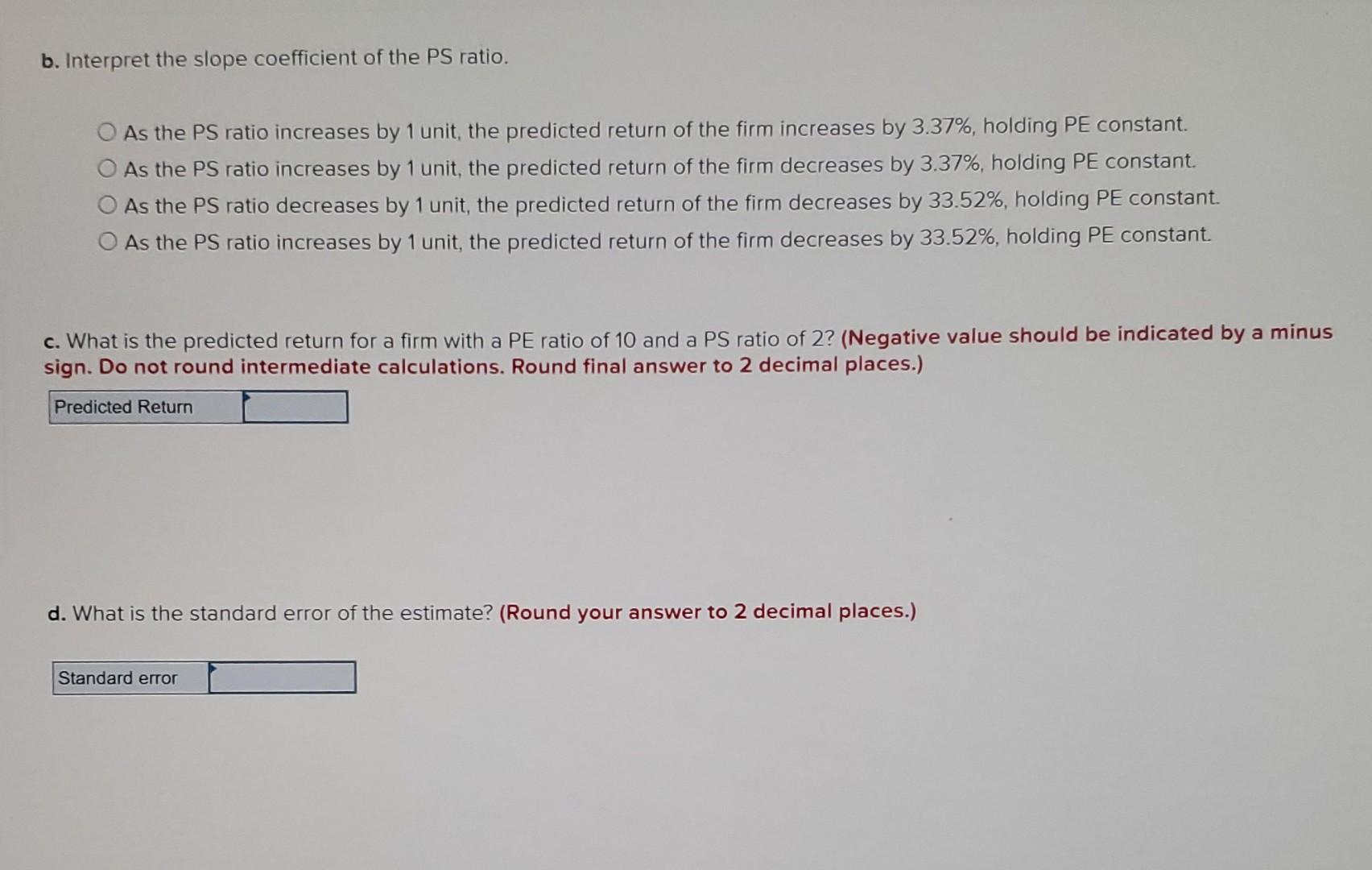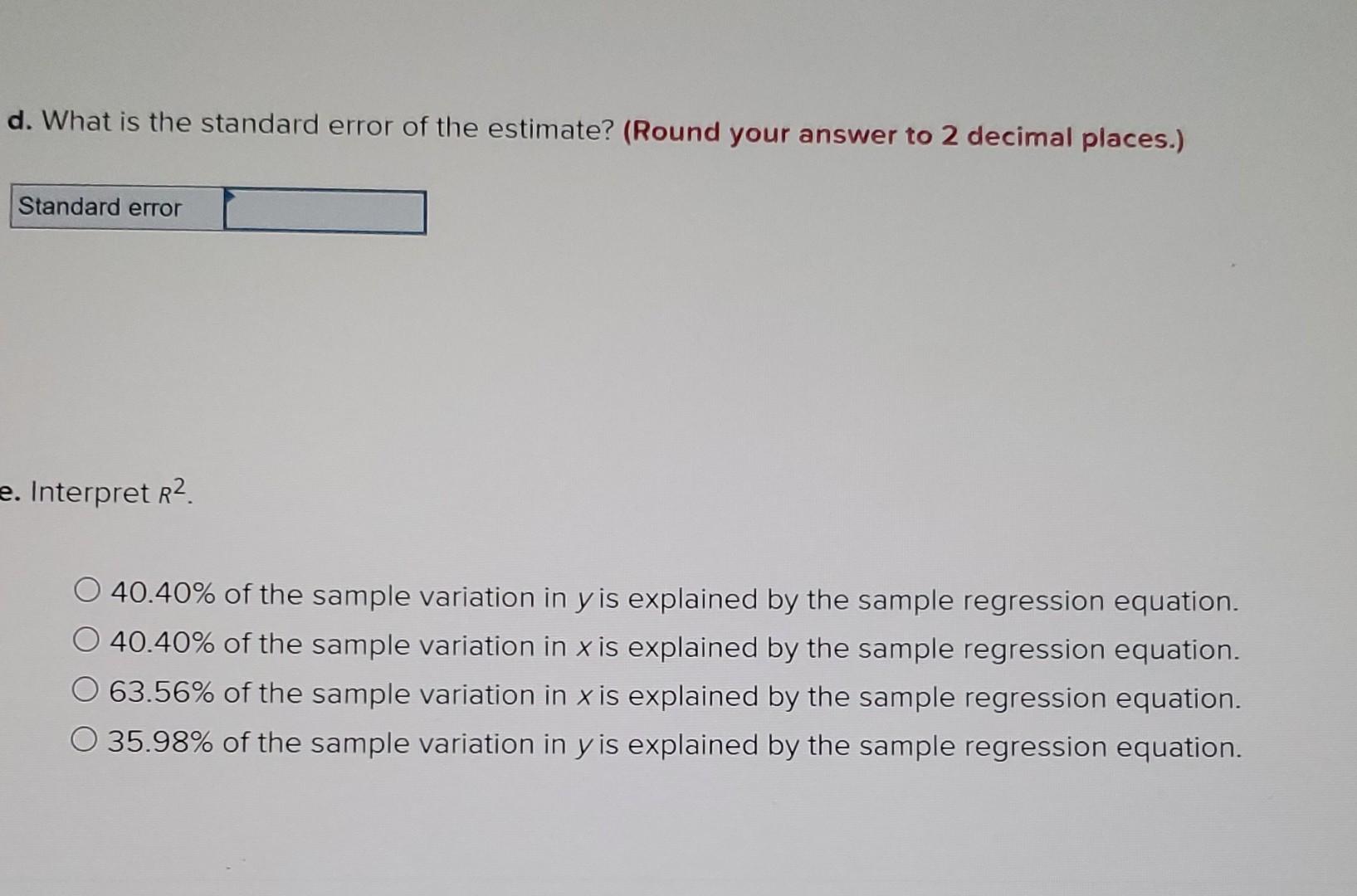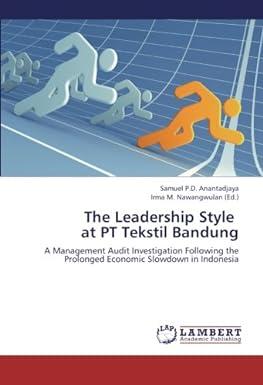Answered step by step
Verified Expert Solution
Question
1 Approved Answer
A research analyst is trying to determine whether a firm's price-earnings (PE) and price-sales (PS) ratios can explain the firm's stock performance over the past



A research analyst is trying to determine whether a firm's price-earnings (PE) and price-sales (PS) ratios can explain the firm's stock performance over the past year. A PE ratio is calculated as a firm's share price compared to the income or profit earned by the firm per share. Generally, a high PE ratio suggests that investors are expecting higher earnings growth in the future compared to companies with a lower PE ratio. The PS ratio is calculated by dividing a firm's share price by the firm's revenue per share for the trailing 12 months. In short, investors can use the PS ratio to determine how much they are paying for a dollar of the firm's sales rather than a dollar of its earnings (PE ratio). In general, the lower the PS ratio, the more attractive the investment. The accompanying table shows a portion of the year-to-date returns (Return in \%) and the PE and PS ratios for 30 firms. Click here for the Excel Data File a-1. Estimate: Return =+1PE+B2PS+. (Negative values should be indicated by a minus sign. Round your answers to 2 decimal places.) a-2. Are the signs on the coefficients as expected? Yes No d. What is the standard error of the estimate? (Round your answer to 2 decimal places.) e. Interpret R2. 40.40% of the sample variation in y is explained by the sample regression equation 40.40% of the sample variation in x is explained by the sample regression equation 63.56% of the sample variation in x is explained by the sample regression equation 35.98% of the sample variation in y is explained by the sample regression equation b. Interpret the slope coefficient of the PS ratio. As the PS ratio increases by 1 unit, the predicted return of the firm increases by 3.37%, holding PE constant. As the PS ratio increases by 1 unit, the predicted return of the firm decreases by 3.37%, holding PE constant. As the PS ratio decreases by 1 unit, the predicted return of the firm decreases by 33.52%, holding PE constant. As the PS ratio increases by 1 unit, the predicted return of the firm decreases by 33.52%, holding PE constant. c. What is the predicted return for a firm with a PE ratio of 10 and a PS ratio of 2? (Negative value should be indicated by a minus sign. Do not round intermediate calculations. Round final answer to 2 decimal places.) d. What is the standard error of the estimate? (Round your answer to 2 decimal places.) A research analyst is trying to determine whether a firm's price-earnings (PE) and price-sales (PS) ratios can explain the firm's stock performance over the past year. A PE ratio is calculated as a firm's share price compared to the income or profit earned by the firm per share. Generally, a high PE ratio suggests that investors are expecting higher earnings growth in the future compared to companies with a lower PE ratio. The PS ratio is calculated by dividing a firm's share price by the firm's revenue per share for the trailing 12 months. In short, investors can use the PS ratio to determine how much they are paying for a dollar of the firm's sales rather than a dollar of its earnings (PE ratio). In general, the lower the PS ratio, the more attractive the investment. The accompanying table shows a portion of the year-to-date returns (Return in \%) and the PE and PS ratios for 30 firms. Click here for the Excel Data File a-1. Estimate: Return =+1PE+B2PS+. (Negative values should be indicated by a minus sign. Round your answers to 2 decimal places.) a-2. Are the signs on the coefficients as expected? Yes No d. What is the standard error of the estimate? (Round your answer to 2 decimal places.) e. Interpret R2. 40.40% of the sample variation in y is explained by the sample regression equation 40.40% of the sample variation in x is explained by the sample regression equation 63.56% of the sample variation in x is explained by the sample regression equation 35.98% of the sample variation in y is explained by the sample regression equation b. Interpret the slope coefficient of the PS ratio. As the PS ratio increases by 1 unit, the predicted return of the firm increases by 3.37%, holding PE constant. As the PS ratio increases by 1 unit, the predicted return of the firm decreases by 3.37%, holding PE constant. As the PS ratio decreases by 1 unit, the predicted return of the firm decreases by 33.52%, holding PE constant. As the PS ratio increases by 1 unit, the predicted return of the firm decreases by 33.52%, holding PE constant. c. What is the predicted return for a firm with a PE ratio of 10 and a PS ratio of 2? (Negative value should be indicated by a minus sign. Do not round intermediate calculations. Round final answer to 2 decimal places.) d. What is the standard error of the estimate? (Round your answer to 2 decimal places.)
Step by Step Solution
There are 3 Steps involved in it
Step: 1

Get Instant Access to Expert-Tailored Solutions
See step-by-step solutions with expert insights and AI powered tools for academic success
Step: 2

Step: 3

Ace Your Homework with AI
Get the answers you need in no time with our AI-driven, step-by-step assistance
Get Started


